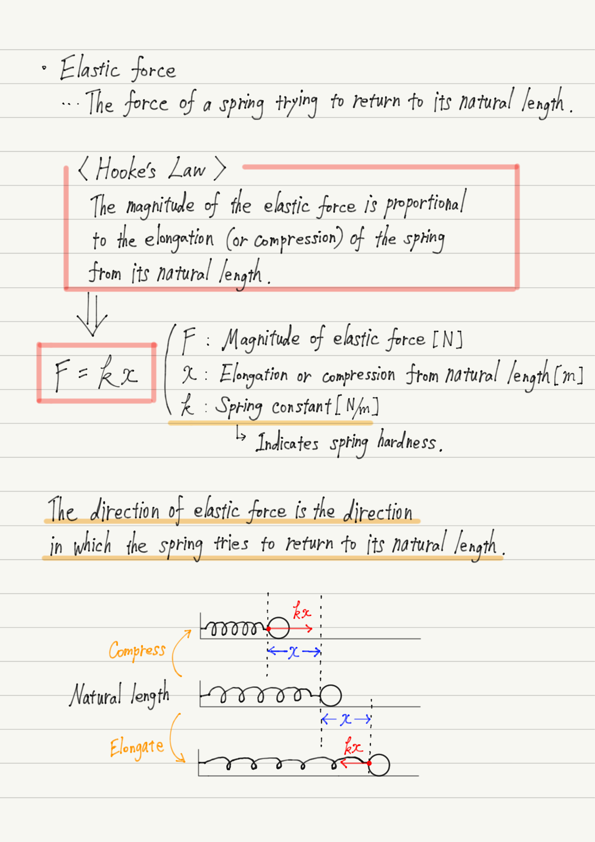Elastic Force
This lecture deals with springs!
First, let’s review forces. In physics, we know that
1) Cause of deformation of an object
2) Cause that changes the state of motion of an object
are called “Force” in physics.
Of these, I explained that since 1) is more complicated, high school physics often deals with forces in the sense of 2).
However, springs are the only exception.
Since the only deformation a spring undergoes is elongation and compression, even a high school student could easily handle this one!
Spring property and Elastic force
The characteristic of a spring is that when it is elongated, it tries to compress, and when it is compressed, it tries to elongated.
In other words, “deforming it causes a force to return it to its natural length”.
This force that tries to return to its natural length is called “Elastic force”.
It is important to note that elastic forces are not of constant magnitude.
As you can easily imagine if you have ever touched a spring, the more it is elongated (or compressed), the more strongly it tries to return to its natural length.
There is a relationship between the amount of deformation of a spring and the magnitude of the elastic force, called “Hooke’s law”. This law is fundamental to solving problems involving springs, so let’s summarize it!
Summary of this lecture
Let us consider the physical meaning of the spring constant k. If F=kx and x=1 m, then F=k.
In other words, the spring constant is a quantity that expresses how much force a spring will try to return when it is stretched by 1 meter.
The larger the spring constant k, the more strongly the spring tries to return to its natural length, so k is considered to represent the hardness of the spring.
Next Time
Starting with the next lecture, we will deal with frictional forces!


